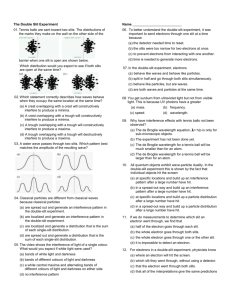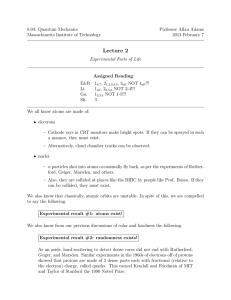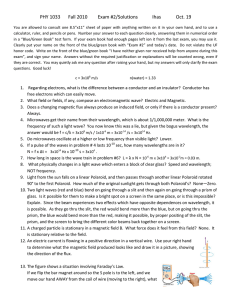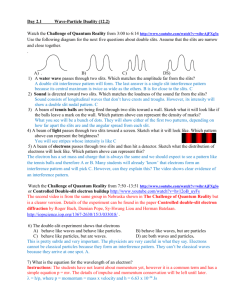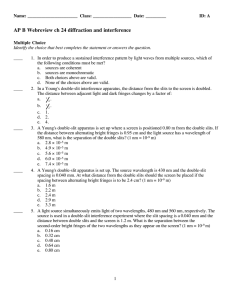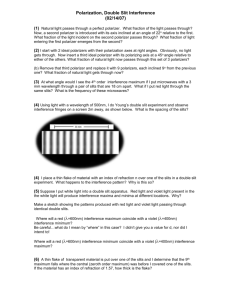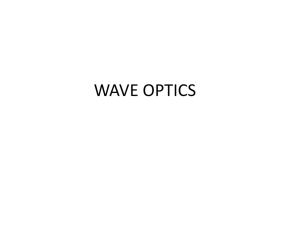Doubleslitexperiment
advertisement
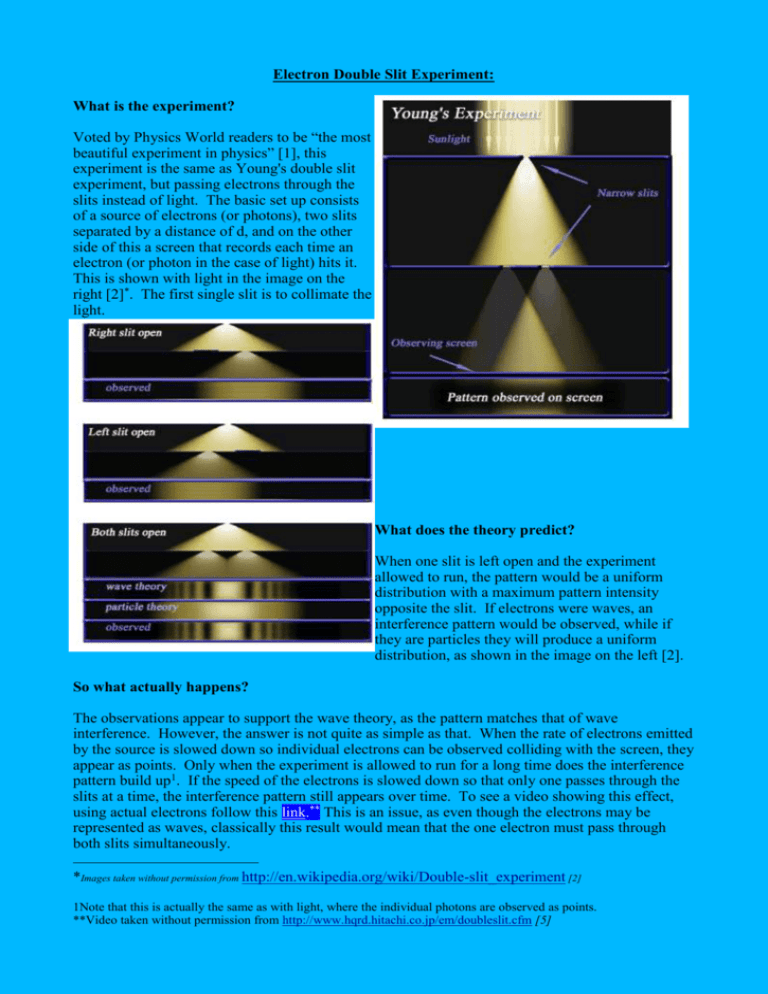
Electron Double Slit Experiment: What is the experiment? Voted by Physics World readers to be “the most beautiful experiment in physics” [1], this experiment is the same as Young's double slit experiment, but passing electrons through the slits instead of light. The basic set up consists of a source of electrons (or photons), two slits separated by a distance of d, and on the other side of this a screen that records each time an electron (or photon in the case of light) hits it. This is shown with light in the image on the right [2]*. The first single slit is to collimate the light. What does the theory predict? When one slit is left open and the experiment allowed to run, the pattern would be a uniform distribution with a maximum pattern intensity opposite the slit. If electrons were waves, an interference pattern would be observed, while if they are particles they will produce a uniform distribution, as shown in the image on the left [2]. So what actually happens? The observations appear to support the wave theory, as the pattern matches that of wave interference. However, the answer is not quite as simple as that. When the rate of electrons emitted by the source is slowed down so individual electrons can be observed colliding with the screen, they appear as points. Only when the experiment is allowed to run for a long time does the interference pattern build up1. If the speed of the electrons is slowed down so that only one passes through the slits at a time, the interference pattern still appears over time. To see a video showing this effect, using actual electrons follow this link.** This is an issue, as even though the electrons may be represented as waves, classically this result would mean that the one electron must pass through both slits simultaneously. *Images taken without permission from http://en.wikipedia.org/wiki/Double-slit_experiment [2] 1Note that this is actually the same as with light, where the individual photons are observed as points. **Video taken without permission from http://www.hqrd.hitachi.co.jp/em/doubleslit.cfm [5] How is this problem resolved? The quantum mechanical solution is to represent the electrons by a wavefunction. As the wavefunction reaches the slits, it has a 50% probability of passing through either one. This causes it to split into two wavefunctions, one passing through each slit, which are now said to be in a superposition with each other. When the wavefunctions reach the screen, which is equivalent of measuring their position, the electron appears at a definite point. However, due to the superposition before measurement, the two wavefunctions can still interfere with each other, producing the interference pattern. This demonstrates how important superposition is in quantum mechanics.References: I'm not sure what reference system we are using, but we make sure we're consistent throughout. [1] Physics web, The most beautiful experiment, http://physicsweb.org/articles/world/15/9/2/1 [accessed 2/5/2005] [2] Wikipedia, Double-slit experiment, http://en.wikipedia.org/wiki/Double-slit_experiment [accessed 3/5/2005] [3] University of Oregon, Planck's Constant, http://abyss.uoregon.edu/~js/cosmo/lectures/lec08.html [accessed 3/5/2005] [4] Zettili, N., Quantum Mechanics: Concepts and Applications, John Wiley, New York, 2001. [5] Hitachi, Double-slit experiment, http://www.hqrd.hitachi.co.jp/em/doubleslit.cfm [accessed 3/5/2005]
